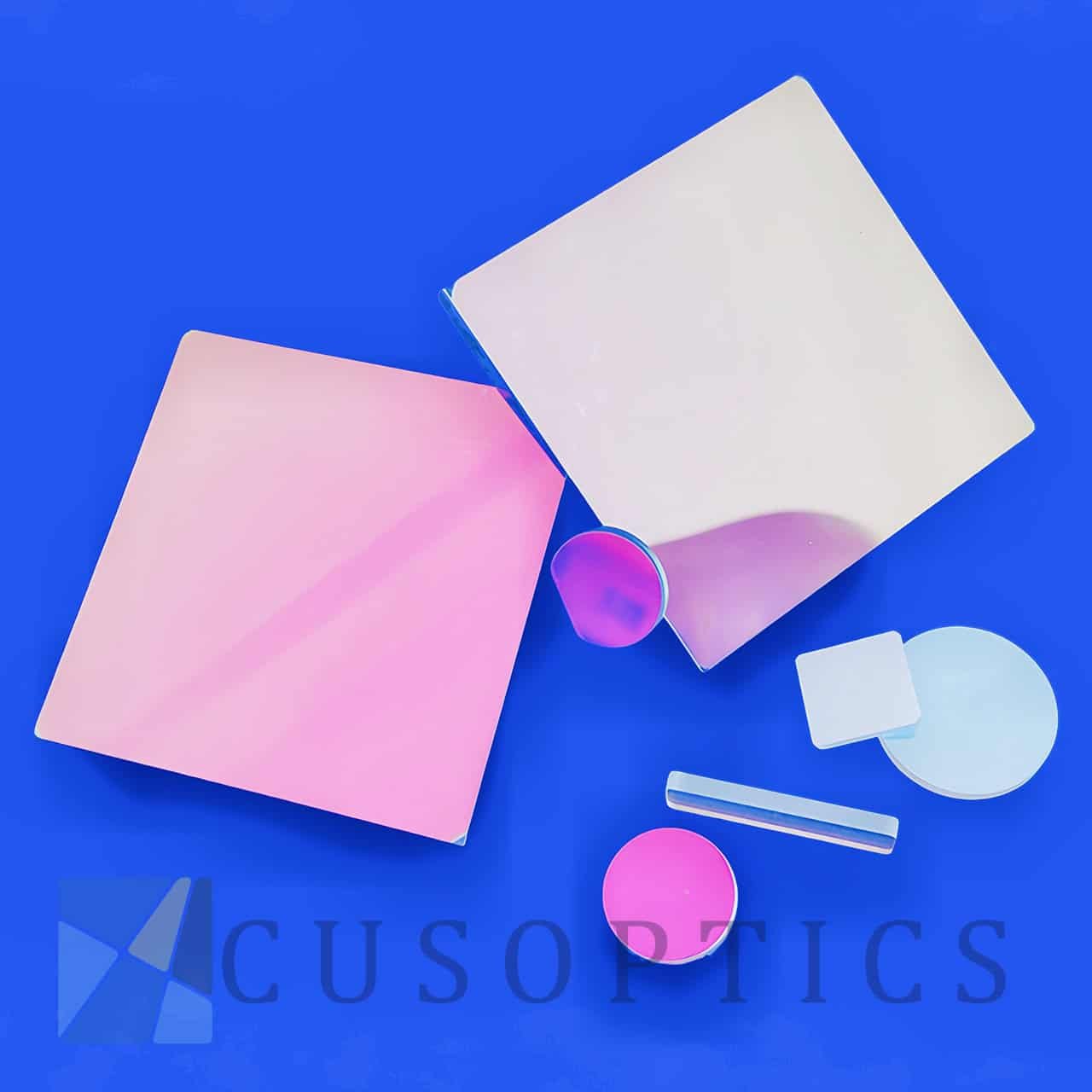Filter Coating
Custom Fabrication
Custom Fabrication
Any question you want to know, just to contact email: cusoptics@micquartz.com.
What is Filter Coating?

Filter coating is a special thin film technology applied to the surface of optical components, whose core function is to selectively transmit, reflect or absorb light according to wavelength. It is like a precise “spectral gatekeeper” or “traffic commander”, allowing only specific colors (wavelengths) of light to “pass through” while “blocking” or “directing” other unwanted light elsewhere.
Why do we need Filter Coating? ——Spectral Purification and Signal Extraction
Light is usually a mixture of multiple wavelengths. In many cutting-edge applications, we need to extract useful parts and eliminate irrelevant or harmful parts.
Improving signal-to-noise ratio: In fluorescence microscopy, it is necessary to separate weak fluorescence signals from strong excitation light.
Realize color perception: The Bayer filter film in front of the camera sensor allows each pixel to only sense red, green, or blue light.
Safety protection: Laser protective goggles need to accurately block lasers of specific wavelengths.
Thermal energy management: The insulation film on building glass transmits visible light but reflects infrared thermal radiation.
Filter coating achieves these core functions through its precise spectral manipulation capability.
How does Filter Coating work?
The vast majority of high-performance filter coatings are based on the interference effect of light.
Interference type: This is the most important and significant type. By using vacuum coating technology, dozens to hundreds of layers of dielectric materials with different refractive indices (such as SiO ₂, TiO ₂, Ta ₂ O ₅) are alternately deposited on the substrate. By precisely controlling the thickness of each layer, the target wavelength of light undergoes constructive interference after passing through each layer, resulting in efficient transmission; Light of non target wavelengths undergoes destructive interference, reflection, or cancellation.
Absorption type: Using the absorption characteristics of the substrate or film material itself for specific light waves to filter light (such as colored glass). These types of filters are usually inefficient and prone to heat generation.
Metal mesh grid: used in the far-infrared/terahertz band, utilizing the response of fine metal structures to specific wavelengths of light for filtering.
Types & Features of Filter Coating
| Type | Spectral curve and functional description | Key Parameters | Application |
|---|---|---|---|
| Bandpass Filter | Only a specific narrow band of light is allowed to pass through, resembling an island. | Center wavelength (CWL): The wavelength corresponding to the peak transmittance. Half width at half maximum (FWHM): The width at half the peak transmittance. The narrower the bandwidth, the better the monochromaticity. | Fluorescence microscope, biochemical analyzer, astronomical photography (such as H – α filter), gas sensing, laser cleaning. |
| Shortpass Filter (SP) | Only light shorter than the cutoff wavelength is allowed to pass through (such as visible light only, anti infrared). | Cut off wavelength: the wavelength at which the transmittance begins to sharply decrease. | Thermal energy management, fluorescence system (separated excitation light), screen projection. |
| Longpass Filter (LP) | Only light longer than the cutoff wavelength is allowed to pass through (such as only transmitting infrared and blocking visible light). | Cut off wavelength: the wavelength at which the transmittance begins to sharply increase. | Fluorescence microscope (separation of emitted light), Raman spectrometer, infrared sensor. |
| Notch Filter | Specially blocking a very narrow wavelength band of light (such as a single laser line) while allowing other light to pass through. Function is opposite to bandpass. | Center wavelength&bandwidth: The center and width of the blocked band. | Laser protection, Raman spectroscopy (suppressing Rayleigh scattering light), optical communication. |
| Dichroic Filter | Splitting based on wavelength: Reflecting light in certain bands while transmitting light in other bands. | Transition/cutoff wavelength: the boundary wavelength between the reflective and transmissive regions. | Fluorescence microscope (core component, known as dichroic mirror), RGB laser combining system, multi band imaging. |
The advantages of Filter Coating
Center wavelength/cutoff wavelength: defines the core wavelength at which the filter operates.
Bandwidth (FWHM): Especially for bandpass and notch filters, the narrower the bandwidth, the stronger the selectivity, and the higher the technical difficulty.
Peak transmittance: The highest achievable transmittance within the passband. The higher, the better, with top-level filters>90%.
Blocking range and depth: The degree to which light is suppressed within the stopband, expressed in optical density (OD). The higher the OD value, the better the blocking effect (OD4 represents a transmittance of only 0.01%).
Cut off steepness: For SP/LP filters, the transition slope from passband to stopband. The steeper, the better the performance.
Incident angle effect: The spectral characteristics of a filter will drift (towards shorter wavelengths) with changes in the incident angle of light, and should be fully considered in design and use.
Application
Life Sciences and Medicine: Fluorescence Microscope (Core Component), Flow Cytometer, Biochemical Analyzer, DNA Sequencer, Endoscope.
Industrial Inspection and Machine Vision: Product Sorting, Surface Defect Detection, Color Measurement, Food Sorting.
Astronomy and Photography: Astronomical photography filters, Bayer filter arrays in front of camera sensors, and multispectral remote sensing using unmanned aerial vehicles.
Safety and Protection: Laser Safety Glasses, Welding Protective Glasses.
Communication and Sensing: Optical Communication Wavelength Division Multiplexing (WDM), Gas Sensors, Lidar.
Display technology and consumer electronics: color wheel in projectors, AR/VR headsets, ambient light sensors.Life Sciences and Medicine: Fluorescence Microscope (Core Component), Flow Cytometer, Biochemical Analyzer, DNA Sequencer, Endoscope.
Industrial Inspection and Machine Vision: Product Sorting, Surface Defect Detection, Color Measurement, Food Sorting.
Astronomy and Photography: Astronomical photography filters, Bayer filter arrays in front of camera sensors, and multispectral remote sensing using unmanned aerial vehicles.
Safety and Protection: Laser Safety Glasses, Welding Protective Glasses.
Communication and Sensing: Optical Communication Wavelength Division Multiplexing (WDM), Gas Sensors, Lidar.
Display technology and consumer electronics: color wheel in projectors, AR/VR headsets, ambient light sensors.
Send Us A Message

